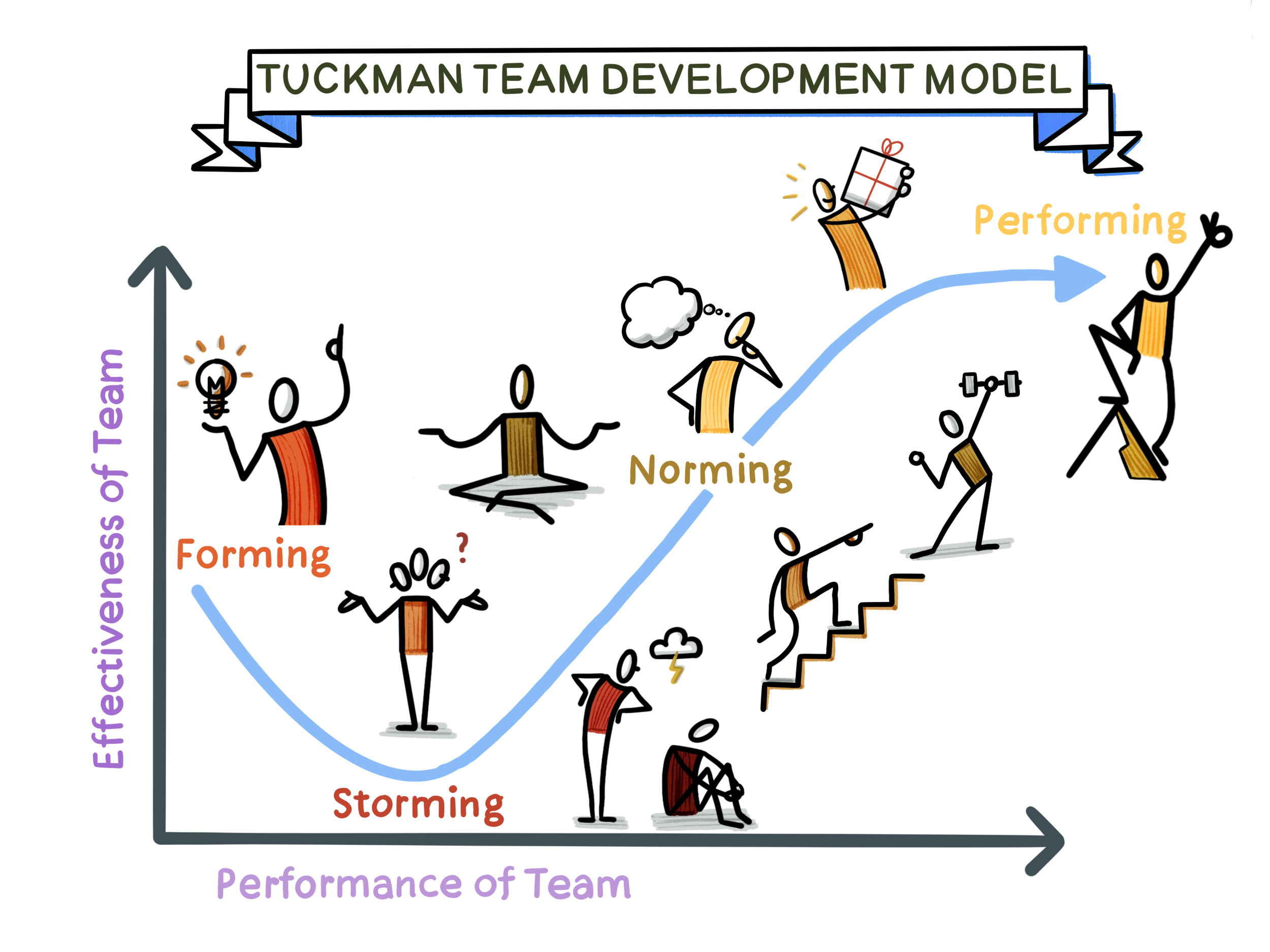From Forming to Performing: Understanding Tuckman's Model of Team Development
Dr. Bruce Tuckman’s five stages of team development have been widely accepted as a framework for understanding the progression of a team from forming to performing. In this blog post, we’ll explore how these stages relate to agile teams and high-performing teams.
First, let’s review Tuckman’s five stages:
Forming: The team comes together and begins to understand its goals and objectives. There may be uncertainty and some initial discomfort as team members get to know each other.
Storming: Conflict arises as team members begin to establish their roles and responsibilities. This stage can be uncomfortable, but it’s important for team members to voice their opinions and work through any disagreements.
Norming: The team begins to establish a sense of cohesion and unity. Team members understand each other’s strengths and weaknesses, and they work together to achieve their goals.
Performing: The team is fully functional and able to work efficiently and effectively. Team members trust each other and are committed to achieving their objectives.
Adjourning: The team is disbanded, either because the project has been completed or because the team members have moved on to other projects.
Dr Bruce Tuckman (1938 – 2016) created the FORMING, NORMING, STORMING, PERFORMING Team Development Model model in 1965, and a decade later added a fifth element, ADJOURNING, to describe the break-up of a team after its project is completed.
Now, let’s examine how these stages relate to agile teams and high-performing teams.
Agile teams are built around the idea of collaboration, and Tuckman’s stages of team development align perfectly with this approach. In the forming stage, the agile team comes together and begins to understand its goals and objectives. During this stage, it’s important for the team to establish its roles and responsibilities and to understand how everyone will work together.
In the storming stage, conflict is almost inevitable as team members establish their roles and responsibilities. However, agile teams are designed to handle conflict effectively, and team members are encouraged to voice their opinions and work through any disagreements in a collaborative manner.
During the norming stage, the agile team begins to establish a sense of cohesion and unity. Team members understand each other’s strengths and weaknesses, and they work together to achieve their goals. Agile teams are particularly effective during this stage because they are built around the idea of continuous improvement. As the team learns and grows, it can adjust its processes and procedures to ensure that it continues to work effectively.
Finally, during the performing stage, the agile team is fully functional and able to work efficiently and effectively. Team members trust each other and are committed to achieving their objectives. This stage is where agile teams really shine, as they are able to deliver high-quality products or services quickly and efficiently.
High-performing teams share many of the characteristics of agile teams. They are built around the idea of collaboration and continuous improvement, and they are designed to work efficiently and effectively. However, high-performing teams often take these characteristics to an even higher level.
In a high-performing team, the members are not only committed to achieving their goals, but they are also dedicated to personal growth and development. They understand that by working together effectively, they can achieve more than they could individually.
Tuckman’s stages of team development are particularly relevant to high-performing teams because these teams often go through these stages multiple times as they work on different projects. They are constantly refining their processes and procedures to ensure that they are working as efficiently and effectively as possible.
In conclusion, Tuckman’s five stages of team development are a useful framework for understanding how teams progress from forming to performing. Agile teams and high-performing teams both align well with this framework, as they are built around the idea of collaboration and continuous improvement. By understanding these stages, teams can work more effectively and efficiently, leading to higher-quality results and greater success.

